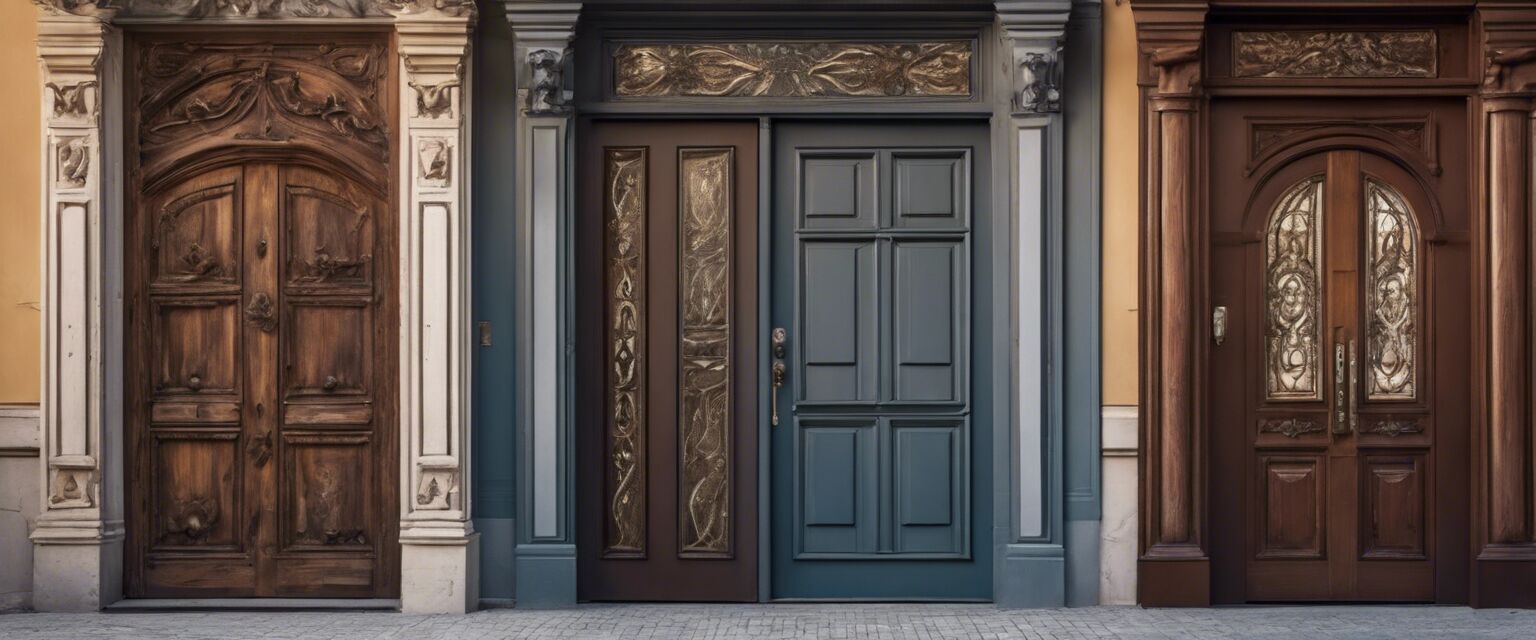
Entry Door Materials
Key Takeaways
- Entry doors can be made from various materials: wood, fiberglass, and steel.
- Each material has its own set of advantages and disadvantages.
- Understanding the characteristics of each material will help in selecting the best entry door for your needs.
- Proper maintenance is crucial for longevity, especially for wood doors.
- Consider energy efficiency and security features when choosing a door material.
Entry doors serve as the first impression for any home and play a crucial role in providing security, insulation, and curb appeal. Choosing the right material for your entry door can significantly impact its durability and aesthetic appeal. In this article, we will explore the most common entry door materials: wood, fiberglass, and steel, detailing their characteristics, benefits, and potential downsides.
Overview of Entry Door Materials
| Material | Characteristics | Pros | Cons |
|---|---|---|---|
| Wood | Natural beauty, can be custom-designed | Elegant look, good insulation | Can warp or rot, needs maintenance |
| Fiberglass | Manufactured, often mimics wood | Durable, energy-efficient, low maintenance | More expensive, limited design options |
| Steel | Strong, metal construction | High security, energy-efficient | Can dent, limited insulation if not done properly |
Wood Entry Doors
Wood entry doors bring a classic elegance to any entryway. They can be customized in various styles and finishes, providing a unique look. However, wood doors are vulnerable to the elements and require regular maintenance to prevent warping and rot.

Pros
- Beautiful and timeless aesthetics.
- Excellent insulation properties.
- Can be painted or stained to match the homeâs decor.
Cons
- Requires regular upkeep.
- Can be susceptible to damage from moisture and pests.
- Higher initial cost than some other materials.
Fiberglass Entry Doors
Fiberglass doors are crafted to withstand the elements while replicating the look of wood. They offer a fantastic balance between beauty and durability. They are more energy-efficient and generally require less maintenance, making them a popular choice among homeowners.

Pros
- Durability and resistance to fading and denting.
- Energy-efficient, keeping homes insulated.
- Low maintenance compared to wood doors.
Cons
- Higher upfront investment than some options.
- Can be limited in design compared to wood.
- May require professional installation for optimal performance.
Steel Entry Doors
Steel entry doors are among the most secure options available. They provide exceptional protection against intruders and are excellent in terms of energy efficiency. While they may not have the aesthetic appeal of wood, advancements in design have made them more visually appealing.

Pros
- Highly secure and resistant to forced entry.
- Good energy efficiency.
- Lower maintenance requirement than wood doors.
Cons
- Can dent, which may require repair or replacement.
- Poor insulation if low-quality materials are used.
- Limited style options compared to wood and fiberglass.
Factors to Consider When Choosing an Entry Door Material
Selecting the right entry door material involves a balance of various factors. Here are some key considerations:
- Climate: Depending on your local climate, some materials may perform better than others. For instance, moisture-prone areas may be better suited for fiberglass or steel.
- Security: If security is your top concern, steel doors are highly recommended.
- Maintenance: Consider how much time you are willing to invest in maintaining your door. Wood requires more care compared to fiberglass and steel.
- Energy Efficiency: Look for materials that offer good insulation properties to save on energy bills.
Conclusion
The choice of material for your entry door has lasting implications on safety, aesthetic appeal, and maintenance. Whether you choose the timeless beauty of wood, the durability of fiberglass, or the strength of steel, understanding each option will help you make an informed decision that suits your needs. For more insights into optimizing your entryway, check out our pages on decorative entryway items, entry door hardware, entryway automation, entryway lighting, and entryway security solutions.








